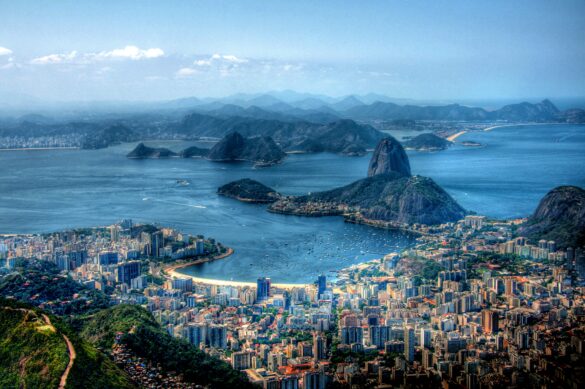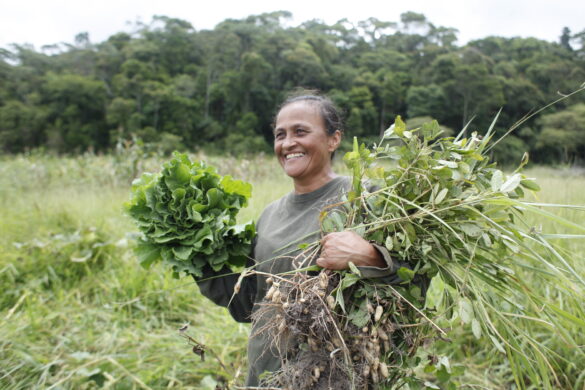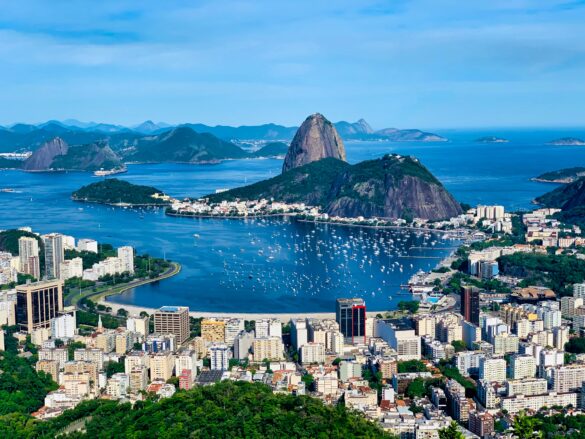Recognizing the water vulnerability and the importance of treating water security as a strategic issue for the development of other public policies, the Government of the State of Rio de Janeiro through the State Secretariat for Environment and Sustainability (SEAS), created the State Program for Water Security (PROSEGH) as per state decree on February 2021.
Background
The State of Rio de Janeiro has a long history of disasters related to climate change and extreme hydrological events of floods, droughts, and landslides. The intensification of hydrological events, coupled with disorderly land use, environmental degradation, and occupation of risk areas, aggravate vulnerability to disasters and increase the frequency of water crises.
Goals
PROSEGH is an instrument for organizing actions, projects, and programs from several sectors whose development promotes the increase of hydric security in the state.
Its primary purposes are:
- Foster the integration of water resources management with other sectorial policies.
- Increase the investment synergy of hydric security actions and projects.
- Minimize water vulnerability related to floods, droughts, landslides caused by extreme hydrological events, climate change, and pollution of water bodies.
- Guarantee water supply in quantity and quality.
- Conserve and raise the environmental quality of water sources.
- Promote environmentally sustainable social and economic development, encouraging a harmonious relationship between human beings and nature.
- Strengthen educational actions, promote the efficient use of water resources, and raise awareness of the need for adaptation to and mitigation of climate change.
How it works
PROSEGH consists of four components:
- Component 1 – Planning: proposal of planning and management strategies capable of subsidizing the implementation of actions and projects that contribute to increasing water security and climate action. Its main product is the State Plan for Water Security.
- Component 2 – Water Supply: it aims to assure water availability compatible with its demand, in order to ensure sufficient water to meet multiple uses. Improvement of water production systems, adoption of alternative sources of supply, such as reuse and desalination, and managing water demand are also actions within this component.
- Component 3 – Environmental Quality: it aims to develop effective actions and integrated solutions to promote water pollution control and the conservation, recovery, and protection of vulnerable areas to water security issues. Also part of the scope of this component are actions focused on urban and rural sanitation that contribute to guaranteeing the provision of ecosystem services of water purification, water regulation, erosion control, sediment reduction, and also actions that collaborate with the goal of carbon neutrality in the state of Rio de Janeiro.
- Component 4 – Risks Associated with Water: focused on actions to manage droughts and floods, environmental accidents originating in water, and the protection of hydraulic infrastructure. The actions and projects contained in this component include the implementation of prevention, mitigation, and adaptation measures against hazardous situations caused by extreme hydrological events and climate change.
WATER2030 initiative
The WATER2030 initiative was established in the scope of PROSEGH, integrating water security actions and strategies for climate action, as presented below:
- Water Security Investment Portfolio: contains 86 actions, projects, and programs to be implemented in the State of Rio de Janeiro in order to increase water security. The Portfolio also includes initiatives from other public entities, private companies, the third sector, civil society, and water resources collegiate bodies, adding up to a total of approximately USD 1.1 billion in investment since the creation of PROSEGH in February 2021.
- State Plan for Water Security: planning instrument to guarantee water security for the State of Rio de Janeiro until 2043.
- Programa LIMPA RIO (CLEAN RIO Program): aims to remove the silt from the water bodies, control flooding, and the proliferation of water-borne vectors. The amount invested was about R$140 million and is expected to reach R$450 million, benefiting more than 16 million people. More than 400 rivers and canals in 60 cities have already been reached, totaling 3,765,175.08 m3 of sediments removed.
- Universalization of sanitation services and access to drinking water: the goal is to guarantee the universalization of sewage collection and treatment, as well as access to drinking water for about 13 million people by 2033, aiming to reach 99% of the population with access to water and 90% with sewage collection and treatment. In 2020, 90% of the population had access to drinking water and 67% had their sewage collected, of which only 69,4% were treated. USD 6,4 billion were raised through the bidding process, of which USD 4,8 billion were granted for investments in the state, also generating jobs and revenue, with an estimated 46,000 direct and indirect job positions.
- Reinvented Guanabara bay: the Program for the Decontamination and Revitalization of Guanabara Bay is composed of 20 actions. The main goal of this project is to make the Guanabara Bay bathing waters clean again in the next 10 years. Highlighting the universalization of basic sanitation as the main action, besides the implementation of a dry weather collection system, recovering the sewage treatment plants, and implementing sewage collectors in the eight municipalities of the concession area that are in the Bay’s surroundings.
- ESG WATER2030: this project aims to engage and encourage ESG practices within private companies and academic institutions with a focus on the efficient use of water to diversify renewable energy sources, in order to maintain energy and population supply in the event of water shortages, as well as stimulating the transition to a low-carbon economy, collaborating with the goal of carbon neutrality in the state of Rio de Janeiro by 2050.
- Florestas do Amanhã (Forests of Tomorrow Program): forest and landscape restoration is a fundamental part of Rio de Janeiro’s climate action. The goal is to reach 40% forest cover in the state of Rio de Janeiro by 2050, which is equivalent to restoring 400,000 hectares with the potential to absorb 143 million tons of CO2. 500 million is expected to be invested in forest restoration in the next 5 years.
- Sustainable assets trading platform: in partnership with the private sector, the State Government of Rio de Janeiro has been promoting the creation of a global platform for green assets trade in Latin America, with headquarters in Rio de Janeiro, with the goal of stimulating sustainable development, forest restoration and a carbon credit market in the region.
Main findings
In order to face the future challenges of prevention, mitigation, and adaptation to climate events, the state has been working to manage water-related risks by adopting measures that contribute to the reduction of social, environmental, and economic risks and damages.
WATER2030 puts the State of Rio de Janeiro in the national spotlight since this innovative initiative promotes water security as an important instrument for climate actions and sustainable economic development. Furthermore, it invests in a path of synergy between public and private actions and budgets, promoting empathy and engagement in society, in order to strengthen educational actions, promote the efficient use of water resources, and raise awareness of the need for adaptation and mitigation of climate change. Water security strategies for climate action require integrated approaches. The involvement of different sectors, with cohesive actions and budgets, increases the chance of achieving the desired results in the long term.





